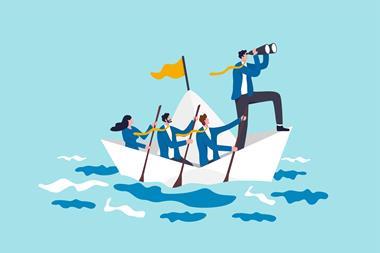Sue Copeman reviews some of the issues raised at Zurich Risk Engineering Global Workshop 2002
Despite the corporate tendency to regard big as better, size increases vulnerability, warned Matthias Haller, professor for risk management and insurance economics at the University of St Gallen. Giving a keynote speech at Zurich Risk Engineering Global Workshop 2002, 'Advice That Fits', held in Dijon, Haller stressed that it was no longer enough to look at risk from a business perspective. Large global corporations also needed to consider the social aspects of what they do.
Haller defined risk as the possibility of deviation from expected (business) results due to disruptive processes. He made the distinction between 'action risk' related to actually intended goals and plans, and 'conditional risk', where the conditions of successful normal procedures are indirectly violated.
Businesses have usually seen risk as being triggered by accidental occurrences. However, intention as a trigger of risk realisation and the over-proportional growth of disturbance-related losses had materialised even before 11 September. This reflects the 'diseconomies' of risk where attaining increases in efficiency by economies of scale means accepting maximum individual loss potentials of macroeconomic and social relevance.
Looking at the dimensions of risk and their development over the last decade, Haller advocated integrated societal and business risk management, striking a balance between action risks and conditional risks. However, he said that it is extremely difficult to measure success in managing conditional risks, because they are rare, with low expectancy. Traditional 'value at risk' concepts tend to neglect conditional risks. Haller concluded that a comprehensive risk dialogue that includes societal aspects should become part of business risk management.
Haller's thought-provoking presentation set the scene for a workshop where Zurich Risk Engineering's clients had considerable input over the issues they wanted addressed. Sustainability and managing brand risk were high on the agenda.
Reto Ringger, CEO of Sustainable Asset Management, Zurich, described corporate sustainability as creating long term shareholder value through embracing opportunities and managing risks deriving from economic, environmental and social developments. Regarding sustainability in financial markets, he said that a corporation that does not perform in all three dimensions of this 'triple bottom line' approach could lose its licence to operate from the market.
There is now a crisis of trust in financial markets. We have moved to a 'show me', or even, 'involve me' world, where stakeholders get closer to corporations. It is important for those corporations to communicate, not only in terms of the financial bottom line, but also on their environmental and social performance.
Ringger said that key questions for investors are:
Using the Dow Jones Sustainability Index as a guide, he showed that sustainable companies have a higher return on investment. And he suggested that today's corporate risk manual should take account of such issues as stakeholder management, risks and crisis management, occupational health and safety, renewable energy, emissions, and environmental management systems.
Niels Christiansen, vice president, public affairs, Nestlé SA, said that about two-thirds of the capitalisation of his company consisted of intangibles, primarily the value of its brands. Managing risks to the brand has to be a central function within a consumer goods company, particularly in the food and drinks sector. Since these are the only products, besides pharmaceuticals, which people ingest, they can have a direct and immediate effect on health. "Trust in the brand is thus a sensitive matter and of paramount concern. Anything which weakens that trust has fundamental and serious business consequences."
Christiansen discussed some of the threats to brand, including internal and external product sabotage. He said that new threats arise from anti-corporate campaigners seeking to destroy brand image in order to protest against globalisation, or to create a symbol for a particular cause. Protection requires strong business principles and policies, an equally strong management system, internal auditing and quality assurance systems, and a robust public affairs management capability. "A company needs to effectively communicate about itself and create a robust reputation that is hard to attack."
IMPROVING LOSS PERFORMANCE
The old style of providing loss prevention services involves the auditor identifying 'violations', issuing a pointed report, and demanding specific actions within time limitations. This method creates animosity from facility personnel towards the auditor, tension between the facilities and their corporate staff, and confusion about what needs to be done. With no resources to carry out the actions, loss prevention improvement is limited.
Richard Sarnie, director, risk management, insurance and security, Engelhard Corporation, described his company's new consultative approach, where facility personnel work to solve problems together with Zurich's risk analysts, who are trained to understand the processes and site operations, . When they have identified loss prevention areas that can be improved, the facilities have responsibility for signing off the report and the inspectors help them to carry out the recommendations. The result of this dialogue between the parties involved has been an improvement in loss performance.
COST BENEFIT ANALYSIS
Traditionally, it has been difficult to assess the value of investment in fire safety in terms of how much the consequent reduction in risk is worth. However, the department of fire safety engineering at Lund University, Sweden, has now developed a method, based on decision analysis, to evaluate the risk reduction that a particular fire safety investment implies and to produce a basis for a decision. The project is now in its final stages, and Henrik Johansson told participants that the model should be available in 2003.
The Zurich Risk Engineering global network is represented in the UK by Zurich Risk Services.
Sue Copeman is editor, StrategicRISK. More information at www.risk-engineering.com



















